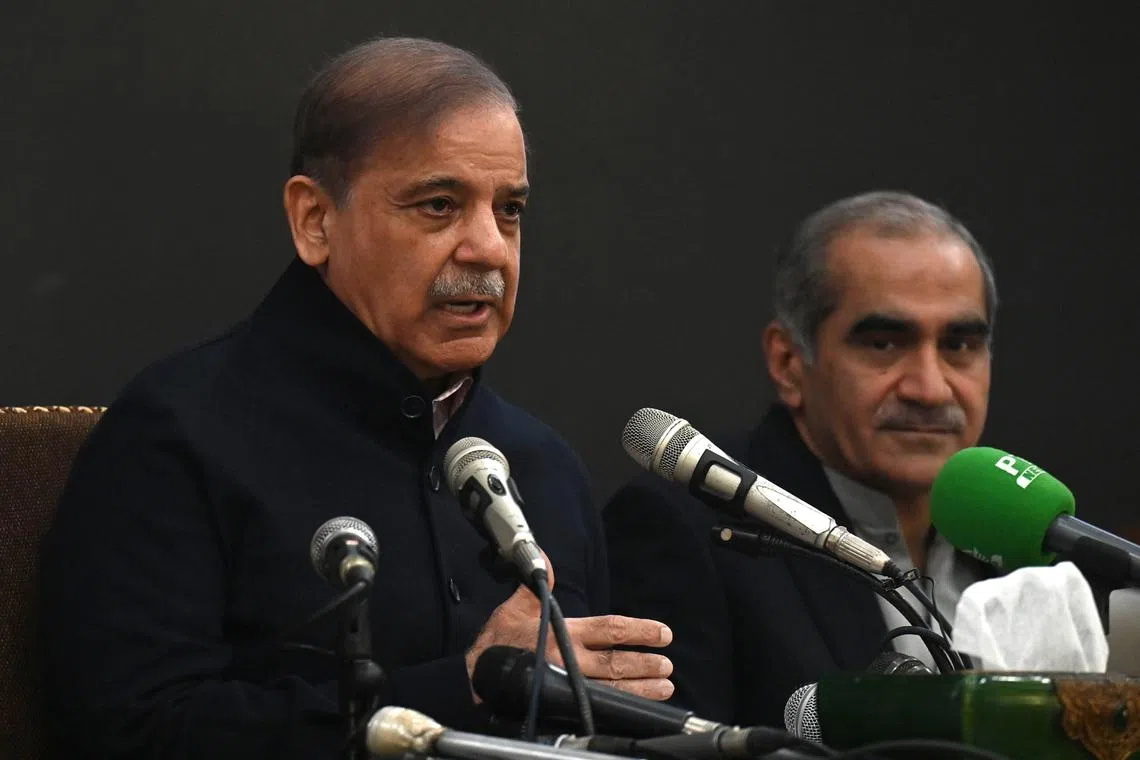Pakistan stalemate ends; Sharif’s party seeks to get partner PPP to join Cabinet
Sign up now: Get insights on Asia's fast-moving developments

Former Pakistani prime minister Shehbaz Sharif has been named as the coalition candidate for next premier.
PHOTO: EPA-EFE
Follow topic:
ISLAMABAD – A political stalemate in Pakistan, after an inconclusive election, ended with former prime minister Shehbaz Sharif chosen to lead the country again, while efforts were under way on Feb 14 to get the second-largest party to join the government to ensure stability.
Mr Sharif, 72, who led Pakistan for 16 months until August 2023, was on Feb 13 named as the coalition candidate to be the next premier by his elder brother Nawaz, founder of the Pakistan Muslim League-Nawaz (PML-N), the largest party in Parliament.
The Pakistan Peoples Party (PPP) of former foreign minister Bilawal Bhutto Zardari, the second-largest, backed the choice but did not commit to joining the government, indicating that it would support a minority government from the outside.
Officials in both the PML-N and PPP said that they formed internal committees to discuss the modalities of government formation, and the agenda included getting PPP to join the administration and take Cabinet positions.
“They are trying their level best, but we are not joining the Cabinet,” PPP leader Faisal Karim Kundi said.
Analysts say Pakistan needs a stable government with political authority to be able to take tough decisions to help pull the country out of its economic crisis.
“Coalition governments can’t work on this principle that one partner takes up all the load and the other partners watch the match from the sidelines and galleries,” PML-N secretary-general Ahsan Iqbal told Pakistani broadcaster Geo TV late on Feb 13.
“Everyone has to play the match together. This is why I am hopeful that this is a mature leadership that knows the problems the country is facing,” he said, when asked about PPP joining Mr Sharif’s government.
Questions about stability
The nuclear-armed nation of 241 million people is grappling with an economic crisis
It narrowly averted a sovereign default in the summer of 2023 with a US$3 billion (S$4 billion) bailout
Negotiating a new programme, and at speed, would be critical for the new government.
It could also face new political tensions with independent members of Parliament, backed by jailed former premier Imran Khan, forming the largest group in the legislature.
This group is at loggerheads with the powerful military and alleges that the vote was rigged.
The caretaker government and the country’s election commission have rejected those accusations.
Khan is in jail on charges of corruption and revealing state secrets
“Negotiations between the PML-N and PPP have begun, but it will not be easy to form a stable coalition administration,” political commentator Zahid Hussain wrote in the Dawn newspaper.
“While showing support for a PML-N-led government, the PPP appears to have decided not to join the future administration.
“It seems that its leadership has realised that a weak coalition with questionable legitimacy may not be able to deliver,” he wrote. REUTERS

